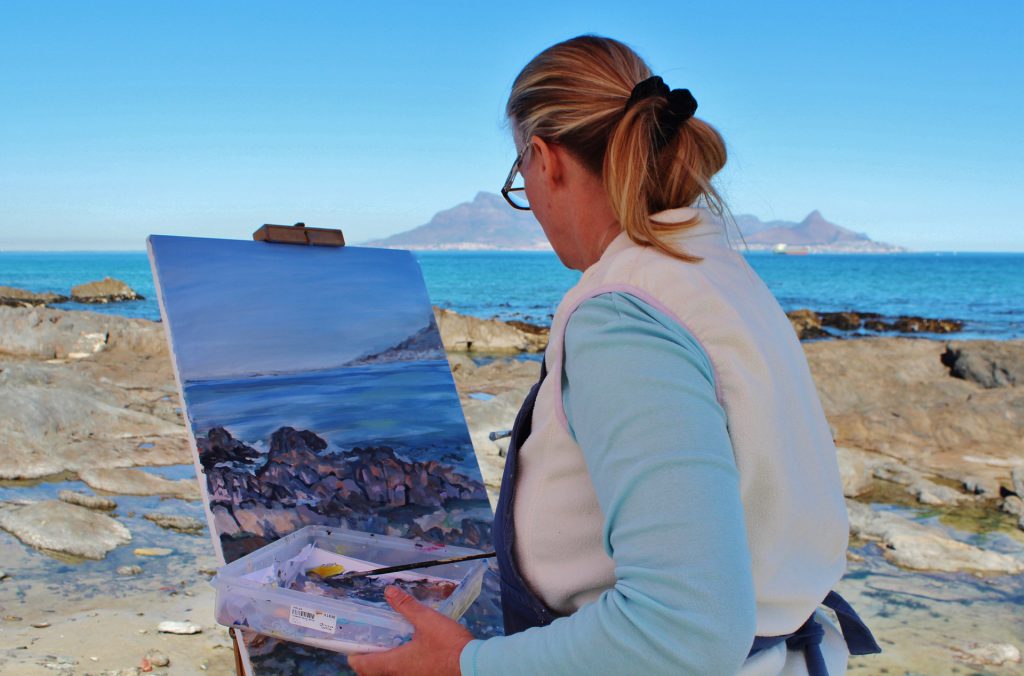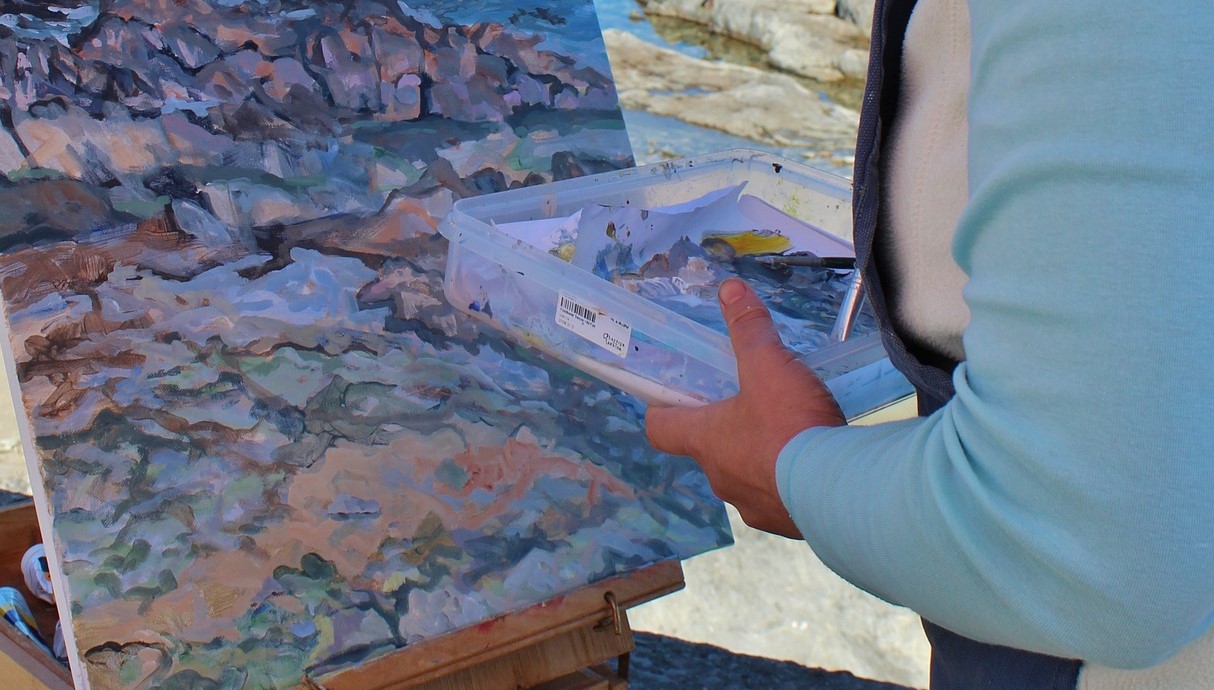A famous hyperrealist was holding a workshop in my city last week. When talking about picturing outdoor subjects, he said that plein air painting was obsolete, because a camera captures every moment with ease and preserves it unchanged for many years.
I’m not so sure about that.
Four Reasons to Paint Outdoors
Photos don’t smell (of course, if you didn’t have spill some coffee on a printed photo). They cannot make sounds, they cannot move. Nature engages our emotions, giving us the great pleasure of feeling alive. The unique experience of involvement provides us guaranteed access to the mystery that is called ‘inspiration’.
A tangible benefit to working away from a comfortable studio is the ability to find the true colors and the most accurate shapes of the scene you like. Alas, even very expensive cameras misrepresent light and shadow. Painting next to a river or in a meadow, you compare the gentlest tints to each other all the time and translate them to your own on-the-spot perception. It’s the same with volume. The world is three-dimensional opposed to flat photographic references.
Plein air work may be challenging, but herein lies its captivation. It resembles an exciting game: hunt your prey and catch it! Hurry, the sun is going down!

This type of painting also allows you to have a nice time enjoying the camaraderie of other artists. I think you won’t have a problem looking for a ‘support team’. Create a public event on Facebook, and at least a couple of artists will join. Maybe they will turn out to be more skilled than you and offer you useful advice. Just making acquaintances is a good thing as well.
Three Arguments Against
Unlike artists who are sitting in the studio, landscape hunters have to deal with the vagaries of weather.
Imagine you have been walking around a forest for two hours and have finally found a beautiful place to paint. You are setting up a tripod, opening paint boxes… suddenly it starts to rain. The day has been wasted.
Well, rain could be predicted – there are more or less correct weather reports, but what about such problems as changes in the light (one of the biggest problems for every artist)? A little cloud appears, and a bright, vibrant scene starts turning to monotone.
These troubles make you work quicker than you are accustomed to, grossly simplifying shapes and contours. On the other hand, such intense practice contributes to developing your style.
People often believe that plein air painting is time-consuming, and the worst part is that a lot of time is spent packing and unpacking your stuff.
Artists who go outdoors usually keep their basic art kit ready.
In addition to brushes and tubes, you should bring your sense of humor along as well. Passersby just love to engage artists in some talk. They want to know everything: who you are, what you are painting, why the white snow on your canvas is blue…
Once my friend and I tried working next to a seafront on a sunny Sunday morning. It was awful! Holidaymakers stood around us like a wall, and we were barely able to view the sea. However, when I was sketching an old oak in the country, and the air temperature was about -5 °C, nobody wanted to ask me silly questions. The big tree looks powerful and pitiful at the same time. I admired it and didn’t feel cold.
Plein air painting isn’t dead at all. A human being needs to be in contact with real nature, especially if he or she is an artist.
*If you buy something through the banner I will earn a commission, at no cost to you. More info


